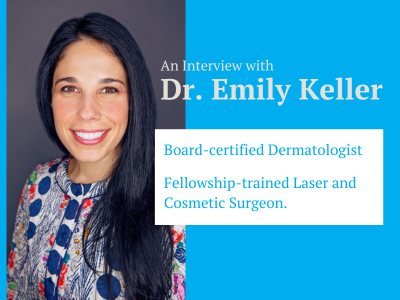In general, chemical peels are intended to create a partial-thickness injury in order to remove the outermost layers of the skin. Peels improve the appearance of the skin by stimulating new, healthier skin cells, so what you do after a chemical peel is essential to generating beautiful epidermal tissue.
To understand our protocols, it’s important to understand first what classification of peel you’re dealing with in the treatment room. Chemical peel depths are dependent on things like the extent of penetration into the skin layers, pH level and what kind of healing time to expect.
There are four levels of peel depth:
Very Superficial Peels - at this level, the peel removes part of the outermost layer of stratum corneum, there is little-to-no downtime, and these are a great peel option when introducing clients to chemical peel treatments.
Superficial Peels - these peels extend into the stratum granulosum, are great for those clients who are ready for more active treatments, and there is little downtime with minimal flaking or peeling a few days post peel.
Medium Peels - these are the strongest peels that can be administered by Estheticians not in a medical setting or with no medical director because these peels penetrate through all layers of the epidermis.
Deep Peels - These should only be administered by a physician or an experienced Esthetician with a medical director. These peels have extensive healing time and can penetrate into the dermis.
Skin Therapeutic chemical peels are non-buffered and have very low pH levels, so it’s very important to understand the classification of our peel line:
Very Superficial/Superficial: Mandelic 30%, Glycolic 30% & 45%, Lactic 30% & 45%, Salicylic 10%, GlycoBlend & LactiBlend
Medium: Glycolic 55%, Lactic 55%, GlycoBright, LactiBright, Light Modified Jessner’s, Light Jessner’s Bright, Salicylic 20% & Light Jessner’s
Deep: Ultra Jessner’s, Jessner’s, Glycolic 70%, Salicylic 30%, Modified Jessner’s & Lactic 70%
So, what does your client need to do (or not do) after their peel treatment?
Most peels take about 5-7 days to show any signs of flaking or peeling, and some are superficial enough that no visible peeling will happen at all. What?! That must mean the peel isn’t working at all and I should douse them in more chemicals! WHOA THERE! No visible peeling does NOT mean that the peel didn’t work! A peel is going to help regardless of the physical sloughing of skin cells.
The most common reactions your clients may see after a chemical peel are:
Dry Patches
Red Spots (and even some Dark Red Spots)
Flaking Skin
Peeling Skin
Your client will be tempted to pick, peel and touch their skin after a chemical peel. Recommend to them that they keep their hands off because if they do pick, it can expose the new skin too soon. Any sloughing needs to happen naturally so to avoid causing post inflammatory hyperpigmentation or other damage to the fresh new baby skin.
Here is the Post Peel Protocol for Skin Therapeutic Peels
The day after the peel treatment (about 24 hours later), your client wash their face with the Gentle Cleansing Gel, moisturize after with Post Procedure Lotion & apply the Water Resistant SPF 30. This is the most minimum regimen, so you can opt to ‘beef it up’ a bit by adding Vita-C 10, Brightinol and/or Hydracell Turnover Booster. They are able to wear make up today, but the more they let their skin breathe, the better the results! Check out this Post Peel Skincare Bundle available for purchase.
The days after the peel should look about the same - cleansing with the Gentle Cleansing Gel, moisturizing with the Post Procedure Lotion, and applying SPF 30 every morning. At night, your client can skip the SPF, and apply active products (like the Brightinol, Vita-C 10 & Hydracell Turnover Booster) to help spur the cellular turnover process and promote healing.
We recommend having your clients come back to the office about 7-10 days post peel treatment to have an exfoliating facial. This facial would include the Microdermal Scrub or the Crystal Exfoliating Scrub to help the sloughing process. Most clients will deter from picking if they know you will be exfoliating their skin for them soon after the peel. This is a great time for you as the professional to determine what products would be best for your client and the skin conditions you’re trying to help them manage.
To keep regimen recommendations simple, remember these 4 steps:
Cleanse - This is pretty self explanatory…clients should have an active & gentle cleanser in their regimen to wash away debris and slough off dead skin cells.
Treat - These products keep the skin active and address skin conditions and concerns.
Balance - Clients need a moisturizer that repairs the skin’s barrier to ensure skin's health.
Protect - Sunscreen. Every. Single. Day.
IN CONCLUSION, IT’S IMPORTANT TO SET REALISTIC EXPECTATIONS FOR THEIR CLIENTS FOR ANY TREATMENT, ESPECIALLY CHEMICAL PEEL TREATMENTS. NO SKIN CONCERN AND PROBLEM CAN BE SOLVED BY ONE-SINGLE CHEMICAL PEEL TREATMENT. IT’S INAPPROPRIATE TO SET THE EXPECTATION THAT ONE-SIZE-FITS-ALL WHEN IT COMES TO PEELS AND HOW MANY TREATMENTS IT’LL TAKE TO OBTAIN THE RESULTS YOUR CLIENT IS WANTING, SO BE SURE TO EXPLAIN REALISTIC EXPECTATIONS FOR THEIR TREATMENT PLAN. INCLUDE THE RECOMMENDED HOME REGIMEN IN THE PLAN! THIS INCLUDES THE CLIENT & HOLDS THEM ACCOUNTABLE FOR THEIR PART, MAKING IT A COHESIVE PARTNERSHIP BETWEEN YOU AND YOUR CLIENT, ESTABLISHING TRUST, CREATING A DEDICATED CLIENT AND BUILDING A LASTING RELATIONSHIP.
